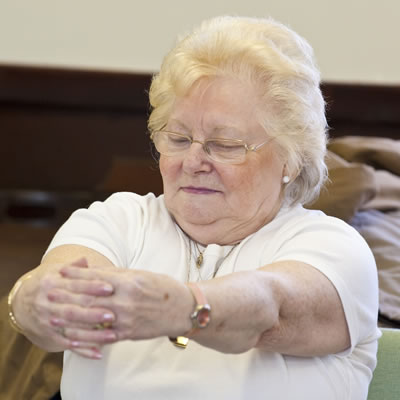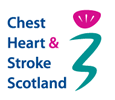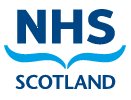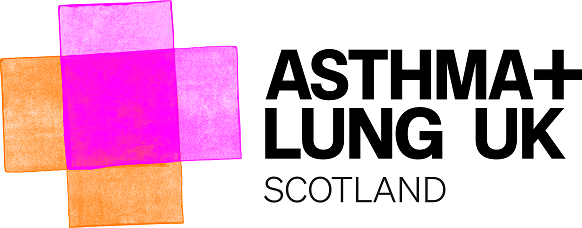
© Crown copyright 2009
This form of relaxation uses the Mitchell method.
The technique gets you to focus your thoughts to be aware of what your body is feeling, where you are holding tension in different muscles and learning how to let go of that tension.
Listen to the audio clip. You can also download this clip to your laptop, desk top , tablet or mobile phone. (Select the arrow on right below the words sound cloud to download) You could also print off the transcript but do not try to read as you are trying to relax, just listen to the instructions on the clip.
Duration: 27 minutes 25 seconds
Voiceover: Louise Mason, Occupational Therapist, NHS Lothian
View audio transcript
I am going to talk you through a relaxation called simple relaxation.
Don’t try to do this relaxation if you have just eaten a meal.
When you choose to do it, think about the environment that you are relaxing in. Switch off any phones. Let other people know that you are about to relax so they don’t disturb you.
Think about your body. Think about if you are sitting or lying down. Are you comfortable? Are you well supported? Use extra cushions for support if needed.
- Notice the points of contact that exist between your body and the chair / bed you are resting on.
- Take time to settle your body, and your mind, for this period of relaxation.
- You may still hear noises of life going on elsewhere, but put this to one side for just now and give yourself permission to take time out to practice relaxation.
- You are going to work around your body, undertaking certain movements, slightly adjusting your positioning each time.
As you move through this relaxation exercise I will repeat each instruction for changing your positioning twice. Getting you to let go of the tension you may be feeling between each change in position.
- Take time to notice and register your new position as accurately as you can, trying to concentrate on the new positions and how they feel. A more relaxed posture can be used to support more relaxed positioning at other times
- Initially this will require concentration and practice, but it does become easier the more regularly you practice
- Just remember The position of your body will vary each time you do the relaxation because each time you do it you will be starting from a slightly different position
- What is important is the instruction to yourself. These instructions never change:
- Move and Feel the release of tension
- Stop
- Feel the release of tension
- Repeat once more
- As you progress and feel comfortable practicing this relaxation you may wish to change the order in which you move around your body. This is ok, the important thing is to take your time to notice the relaxed position and to concentrate on what it feels like for you
I am going to start off at your feet and ankles and then slowly progress through your body.
So starting at your feet and your ankles,
MOVE and slowly push your feet away from your face. If sitting you may come onto the balls of your feet.
FEEL the stretch down the front of your legs and across your ankles. You may feel increased tension in the muscle at the back of your legs. Notice what that feels like.
STOP, and let your feet return to a comfortable position.
FEEL the slow release of tension in your muscles as they settle back into a comfortable position.
I am going to ask you to repeat that movement again.
MOVE and slowly push your feet away from your face. If sitting you may come onto the balls of your feet.
FEEL the stretch down the front of your legs and across your ankles. You may feel increased tension in the muscle at the back of your legs.
STOP, and let go, let your feet return to a comfortable position.
FEEL the slow release of tension in your muscles in your feet, around your ankles and in your lower legs as they settle back into a comfortable position. Take your time. Enjoy the sensation of your feet resting at the end of your legs.
I am now going to ask you to move your attention from your feet and your ankles to your knees and your thighs.
MOVE your knees, gently squeezing them together, and hold in this position.
FEEL the increased tension in the muscles of your thighs. Notice where you feel that increased tension.
STOP, and let go. Let your knees return to a comfortable position. Your knees may gently fall apart.
FEEL the slow release of tension in your thigh muscles as your legs settle back into a comfortable position.
I am going to ask you to do that once more.
MOVE your knees, gently squeezing them together, and hold in this position.
FEEL the increased tension in the muscles of your thighs. Notice where you feel that increased tension.
STOP, and let go. Let your knees return to a comfortable position. Your knees may gently fall apart.
FEEL the slow release of tension in your thigh muscles as your legs settle back into a comfortable position. Take your time. Enjoy the sensation of your legs relaxing.
I am now going to ask you to move your attention to your body. To your abdomen and your chest.
Gently MOVE, slowly pushing your body back into the support of the chair or the bed that you are on. Do that now. Just gently and slowly push your body back in to the support and feel the contact of your body against the support of the chair or the bed. Notice how the chair or the bed, how it feels supporting your body. Notice any increase in tension across your abdomen and chest, register how this feels.
STOP, and let go.
FEEL your body let go, and notice your body may slump forward slightly as you return to a comfortable position letting go of any tension you created. Gently move your body. Once your body is settled I am going to ask you to repeat this movement again.
Slowly pushing your body back into the support of the chair or the bed that you are on. Do that now. Just gently and slowly push your body back in to the support and feel the contact of your body against the support of the chair or the bed. Notice how the chair or the bed, how it feels supporting your body. Notice any increase in tension across your abdomen and chest, register how this feels.
STOP, and let go.
FEEL your body let go, and notice your body may slump forward slightly as you return to a comfortable position letting go of any tension you created. Let your body settle at rest.
I am going to ask you to take your attention to your shoulders. On your next outward breath gently
MOVE your shoulders. Let them drop towards your feet…. noticing any downward movement of your shoulders.
FEEL this movement, noticing it is a very small movement but your shoulders are further away from your ears. Notice how you feel in this position.
STOP, and let go.
On your next inward breath FEEL your shoulders bounce back slightly, trying to return to their starting position. This is perfectly natural.
I am going to ask you to repeat this movement so that on your next outward breath gently
MOVE your shoulders. Let them drop towards your feet…. noticing any downward movement of your shoulders.
FEEL this movement, noticing it is a very small movement but your shoulders are further away from your ears. Notice how you feel in this position.
STOP, and let go.
On your next inward breath FEEL your shoulders bounce back slightly, trying to return to their starting position. Just notice what this feels like around your shoulders, around your chest. As you breathe in and as you breathe out let your shoulders move slowly towards your feet, letting them relax.
I am now going to take your attention down from your shoulders down your arms to your elbows. Focus your attention to your elbows.
Gently MOVE your elbows out and open. Move your upper arms away from your body, not lifting them but FEEL the angle opening up at your elbows by moving your forearms away from your sides. Not a large movement, a small movement.
STOP.
FEEL your upper arms away from your body, and feel the wider angle at your elbows…. notice this new position, and then let go. Let your arms drop back to your sides.
I am going to ask you to do this once more.
Gently MOVE your elbows out and open. Move your upper arms away from your body, not lifting them but FEEL the angle opening up at your elbows by moving your forearms away from your sides. Not a large movement, a small movement.
STOP.
Let go and feel the difference in the position of your elbows now. Your elbows are no longer glued to your sides. There is a more open angle at your elbows.
DO NOT HURRY your way through this relaxation. Just take your time and notice the changes in your positioning and what this feels like.
I am now going to ask you to move your attention down from your elbows to your hands.
MOVE your hands, trying to keep your hand supported, gently stretch out your fingers long and wide. FEEL the space between each finger. Feel the stretch
STOP and let go. Let your hands rest, fingers long, resting against the support.
FEEL your fingers and thumbs stretched out and separated, touching the support of the surface they are resting on.
I am going to ask you to repeat this movement once more.
Stretch out your fingers long and wide. Feel that stretch across your palms and down your fingers. Then STOP and let go. Let your hands rest, fingers long. Take a moment to register the position of your hand. Register the space that is between your fingers. Take a moment to register what messages are travelling up through your fingertips to your brain. Pay attention to the texture of the surface that they are resting on. Is it rough or is it smooth? Is it warm or cool to the touch. Take a moment to notice what your fingertips are telling you that at other times of the day you are too busy to notice.
I am going to ask you now to draw your attention back from your hands, up past your elbows, back up to your shoulders. Don’t hurry, just take your time and notice what your body is telling you. Check the position of your shoulders. Are they still relaxed? Keep on moving up wards taking your attention to your mouth. You can carry a lot of tension around your jaw area without realising it.
Slowly MOVE your bottom jaw downwards, separating your lower teeth from your top teeth. As this happens you may feel the stretching of your skin over your cheeks.
STOP, and let go.
FEEL your separated teeth. Your lips may gently be touching or as you stop stretching your jaws may slowly return to their earlier position. Notice how this feels and let your tongue rest against your bottom teeth, noticing how this feels. Try to stop your teeth from clenching together.
I am going to ask you to repeat this movement again.
Slowly MOVE your bottom jaw downwards, separating your lower teeth from your top teeth. As this happens you may feel the stretching of your skin over your cheeks. Notice any changes you feel around your mouth and jaw.
STOP, and let go.
FEEL your separated teeth. Notice the position of your lips. They may gently be touching or as you stop stretching your jaws may slowly return to their earlier position. Notice how this feels and let your tongue rest against your bottom teeth, noticing how this feels.
I am going to ask you now to move your attention to your eyes.
MOVE – If you haven’t already done so, and you now feel safe enough to do so, gently close your eyes. FEEL your upper lids resting gently over your eyes.
STOP.
FEEL your eyelashes gently resting together; let your eyes and the associated muscles rest.
I am going to ask you to repeat this movement again.
Gently let your eye lids rest closed. Feeing your upper lids resting over your eyes. STOP. Notice what this feels like. Notice what it feels like with your eyelashes gently resting together. Enjoy the peace you have created.
Now think about moving your attention to the area above your eyebrows to your forehead. Think about gently smoothing away any frowns or worry lines. Trying to move away any stress or tension from this area with each outward breath. Breathing in and breathing out. Slowly moving the tension over the top of your head and feeling a smoothing sensation at the back for your neck. STOP, Take a moment. Feel the smoothing action across your forehead. Over the top of your head and down your neck.
Try this again. Think about gently smoothing away any frowns or worry lines. Move any of the stress or tension away from your forehead. Breathing in and breathing out. Slowly moving the tension away from your forehead. Take your time and enjoy this sensation.
Coming to the end of this relaxation. Take a moment to think about your breathing. Do not try to change the rate or the depth of your breathing but just notice the gentle rise and fall of your chest and your ribcage on each breath. Feel your lower ribs move gently outwards and upwards as you breathe in. As you slowly breathe out your ribs return to the starting position. Repeat this as many times as is helpful for you. Take your time. Use your outward breath to breathe out any hot spots of tightness or tension that you have found in your body. Take time to check over your body, repeating any or all of these movements as you see fit. Take your attention to the parts of the body where you feel the most tension. Use the change in position to help you relax. Make time to practice this relaxation on a regular basis. Remember, never rush from relaxing to standing and moving around. You have slowed your body down. Gently stretch to get your body moving. Stretch your fingers, rock your feet back and forward. Get your body slowly moving again. This is important after you have slowed your body down to prevent and dizziness.





